Info
Subfamily: Panicoideae
Genus etymology: Dichanthelium = "having two inflorescences" [Greek] refering to the temperate members of this genus which have differently structured spring and fall inflorescences
Species etymology: acuminatum = "having a sharp point" [Latin] likely refering to the leaves
Photosynthetic type: C3 (cool season)
Nativity: naturalized - accidental
First recorded in Hawaiʻi: 1951
Map
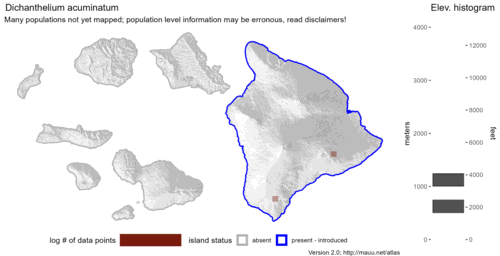
Inflorescence
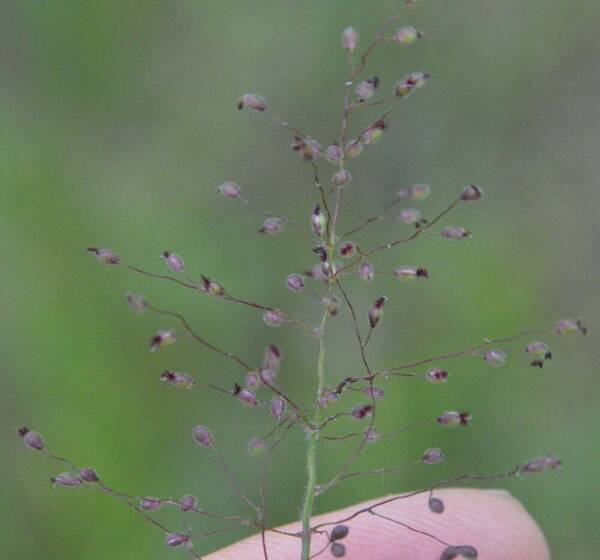 image credit: Dan_Johnson
image credit: Dan_Johnson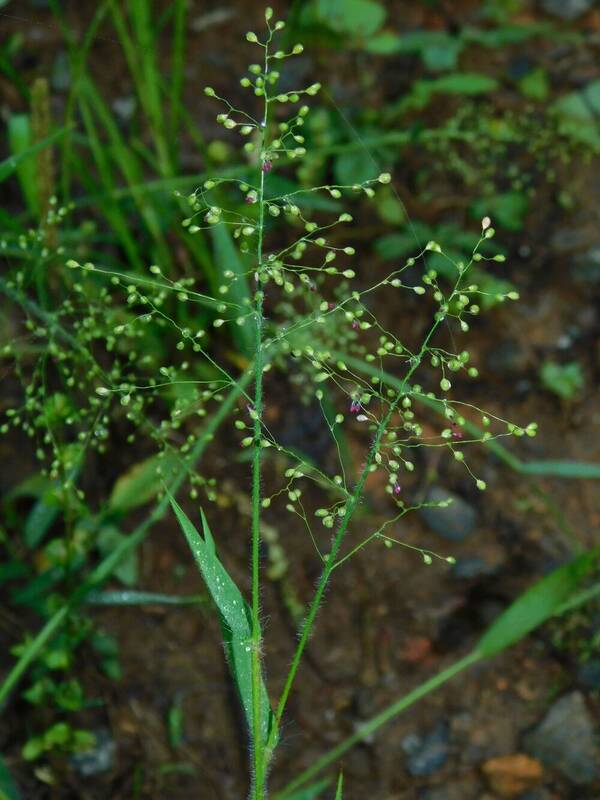 image credit: Michael_Papay
image credit: Michael_PapayPlant
 image credit: Scott_Ward
image credit: Scott_Ward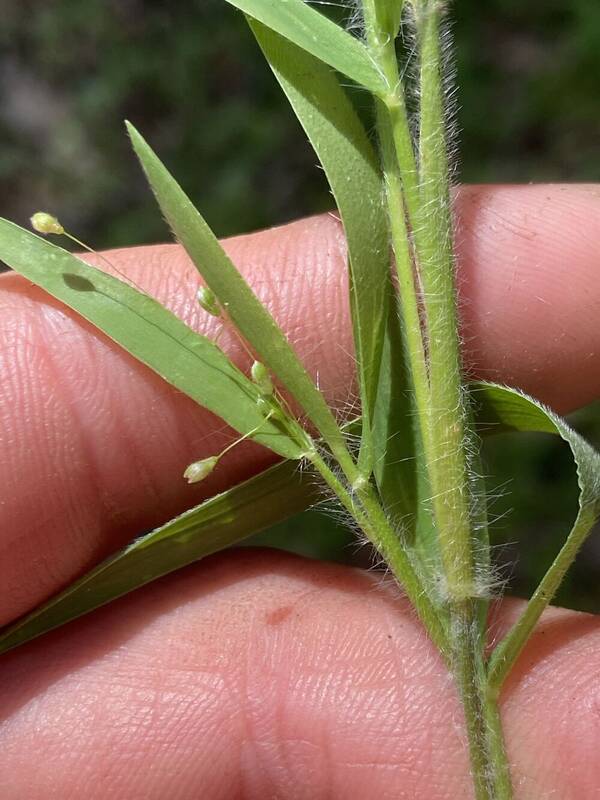 image credit: Scott_Ward
image credit: Scott_WardCollar
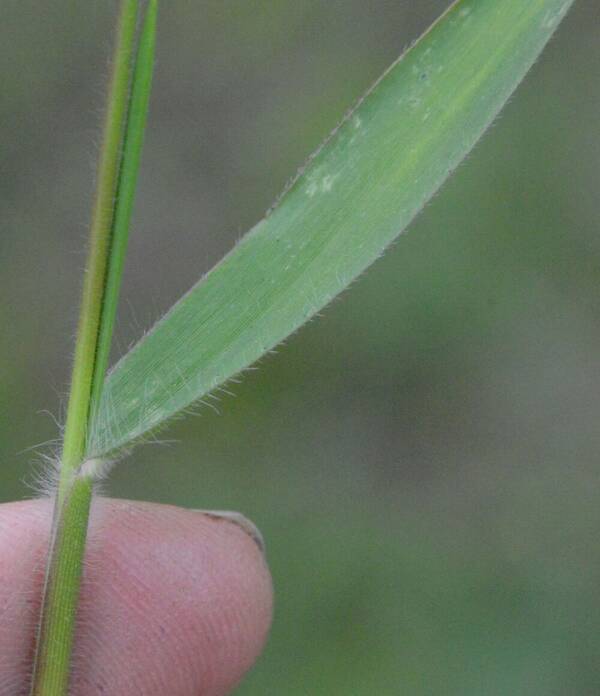 image credit: Dan_Johnson
image credit: Dan_Johnson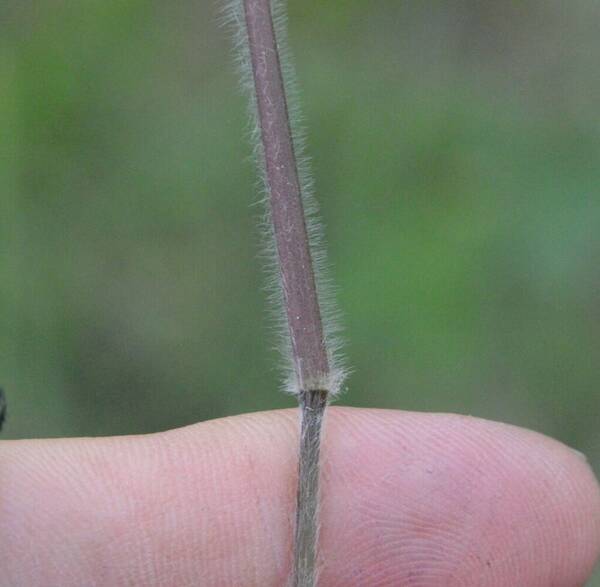 image credit: Dan_Johnson
image credit: Dan_JohnsonDescription
Plants more or less densely caespitose. Basal rosettes usually well-differentiated; blades ovate to lanceolate. Culms 15–100 cm (rarely taller), usually thicker than 1 mm, weak and wiry or relatively stout and rigid, erect, ascending or decumbent; nodes occasionally swollen, glabrous or densely pubescent, often with a glabrous or viscid ring below; internodes purplish or olive green or grayish-green, to yellowish-green, variously pubescent, with hairs of 2 lengths or glabrous; fall phase erect, spreading, or decumbent, usually branching extensively at all but the uppermost nodes, ultimately forming dense fascicles of branchlets with reduced, flat or involute blades and reduced secondary panicles with few spikelets. Cauline leaves 4–7; sheaths usually shorter than the internodes, glabrous or densely and variously pubescent with hairs shorter than 3 mm, margins ciliate or glabrous; ligules and pseudoligules 1–5 mm, of hairs; blades 2–12 cm long (rarely longer), 2–12 mm wide (rarely wider), firm or lax, spreading to reflexed or stiffly ascending, yellowish-green or grayish-green to olivaceous, densely to sparsely and variously pubescent, margins similar or occasionally whitish-scabridulous, margins often with papillose-based cilia, at least basally, bases rounded or subcordate. Primary panicles 3–12 cm, ¼–¾ as wide as long, usually open, well-exerted, rather dense; rachises glabrous, puberulent, or more or less densely pilose, at least basally. Spikelets 1.1–2.1 mm, obovoid to ellipsoid, yellowish-green to olivaceous or purplish, variously pubescent, obtuse or subacute. Lower glumes usually ¼–½ as long as the spikelets, obtuse to acute; upper glumes and lower lemmas subequal, equaling the upper florets at maturity, or occasionally the upper glumes slightly shorter, not strongly veined; lower florets sterile; upper florets 1.1–1.7 mm long, 0.6–1 mm wide, ellipsoid, obtuse to acute or minutely umbonate or apiculate. 2n = 18.
(Description source: Barkworth, M.E., Capels, K.M., Long, S. & Piep, M.B. (eds.) 2003. Flora of North America, north of Mexico. Volume 25. Magnoliophyta: Commelinidae (in part): Poaceae, Part 2. Oxford University Press, New York. 783 pp http://floranorthamerica.org/Dichanthelium_acuminatum )